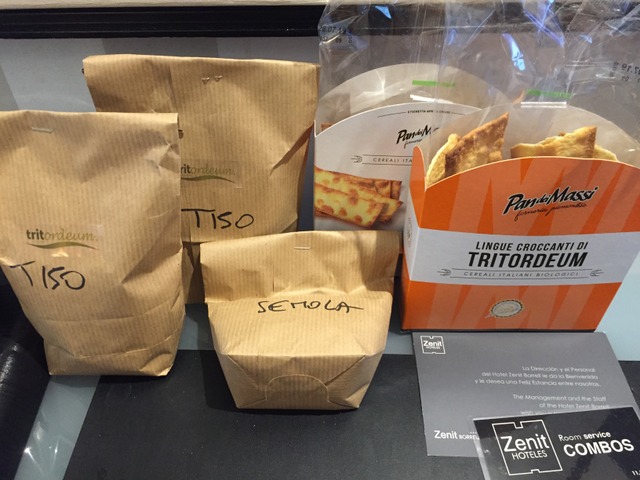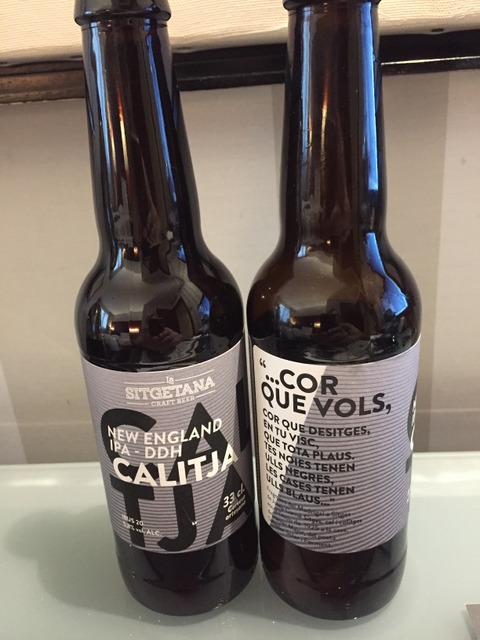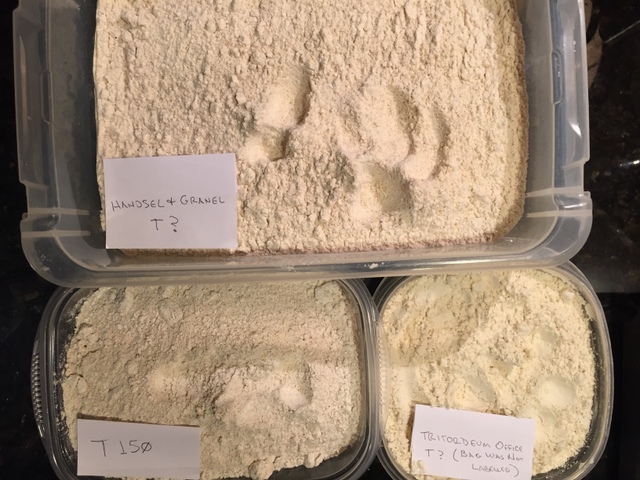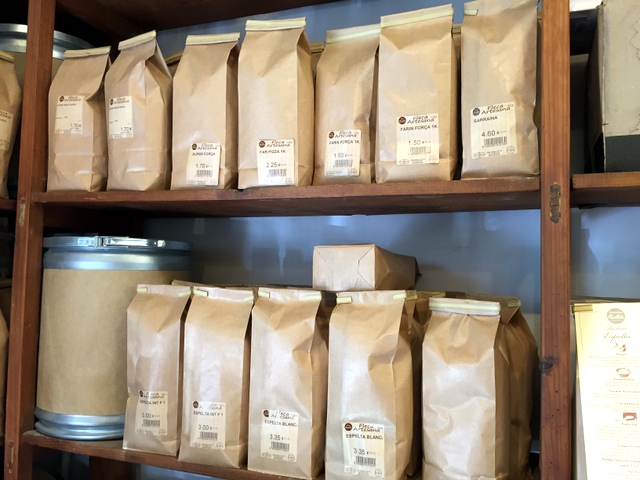A few months ago I posted my version of Abel Sierra’s Tritordeum baguettes, a result of which is posted in the lead photo.
Tritordeum, as stated earlier, is a new hybrid grain developed in Spain after decades of breeding and cultivation, and finally coming to market sometime around 2013 or so. It is grown primarily in Spain, France and Italy and available across a few European countries. After recalling the posting by Abel I came across a 500g bag in Trieste Italy and gave it a one time bake upon returning home. My posting in Aug. 2018 is in the link above.
In Barcelona last week, I recalled that the worldwide headquarters of Agrasys, the company that promotes Tritordeum, is located there. Unannounced, I rang the doorbell to their office on Tuesday afternoon, to see if I could register a “complaint" that I had searched a number of small and large supermarkets in the city in a vain attempt at finding the flour on a shelf. Anton, who answered the ring, came down to discuss why, and we talked shop for a while. A meeting was underway in their offices, and so Anton was apologetic for not inviting us up. When we returned an hour or so later, he greeted us at the downstairs front door again, this time with a bag of a few sample flours, two packs of Tritordeum crackers and a pair of IPA beers brewed with the grain. And an offer for a return visit later in the week to come up and meet the staff.
Anton had glanced at my TFL blog and stated that he mentioned me to the others in the office. We returned on Friday, meet the staff and discussed shop. Still frustrated at not being able to locate the grain in any store, or the Forn Baltá bakery in the Sants neighborhood that once sold the flour over the counter, we were directed to a grain shop nearby where they had a bag of the flour in bulk.
Anton, Verónica and the entire staff, right up to the Company CEO, were warm and wonderful and interested in my personal experiment and own interest in the grain. It was a great experience. Verónica knew Abel from his baking days Barcelona, and so in a way, the circle was completed, with me having discovered the grain thanks to Abel.
All in all, I came home with about 4 kilos of T150 and a few smaller bags of a more refined grain, perhaps a T65.
In the interests of “science”, I’ve already converted a 100% hydration AP liquid levain into both 100% and 75% hydration Tritordeum levains. The three stages of builds for each took place over the course of a calendar day, with the first consuming 10 hours to mature, the second 3 hours and the third a little under 3 hours to more than double. I now feel that I have built up a strong enough pair of levains with most of the original AP flour winnowed out. So I'll declare that it is almost a 100% pure Tritordeum levain at this point.
The dough was incredibly slack at my singular 70% hydration experience. But with my planned 80% T150 grain as well as my decision to use 20% strong white flour, and after discussion with the staff, I feel as though I can still maintain a 70% hydration dough and get a less extensible result. This should yield a dough that is more manageable than in my prior experience. Time will tell and I’ll post some of my experimental results along the way.
A grateful thank you to all of the incredibly inviting people who we met at Agrasys.
Verónica, alfanso and Anton:

Anton's first "care package" to me:

And don't forget the Tritordeum grain IPA:

The ~6K of grain now nestled in containers:


Shelves at Forn Baltá bakery of "everything" but Tritordeum :-( :

Barcelona is a wonderful city. One of Antoni Gaudí's first creations:

And "just" another doorway in a city graced with exquisite and fantastic architecture.
